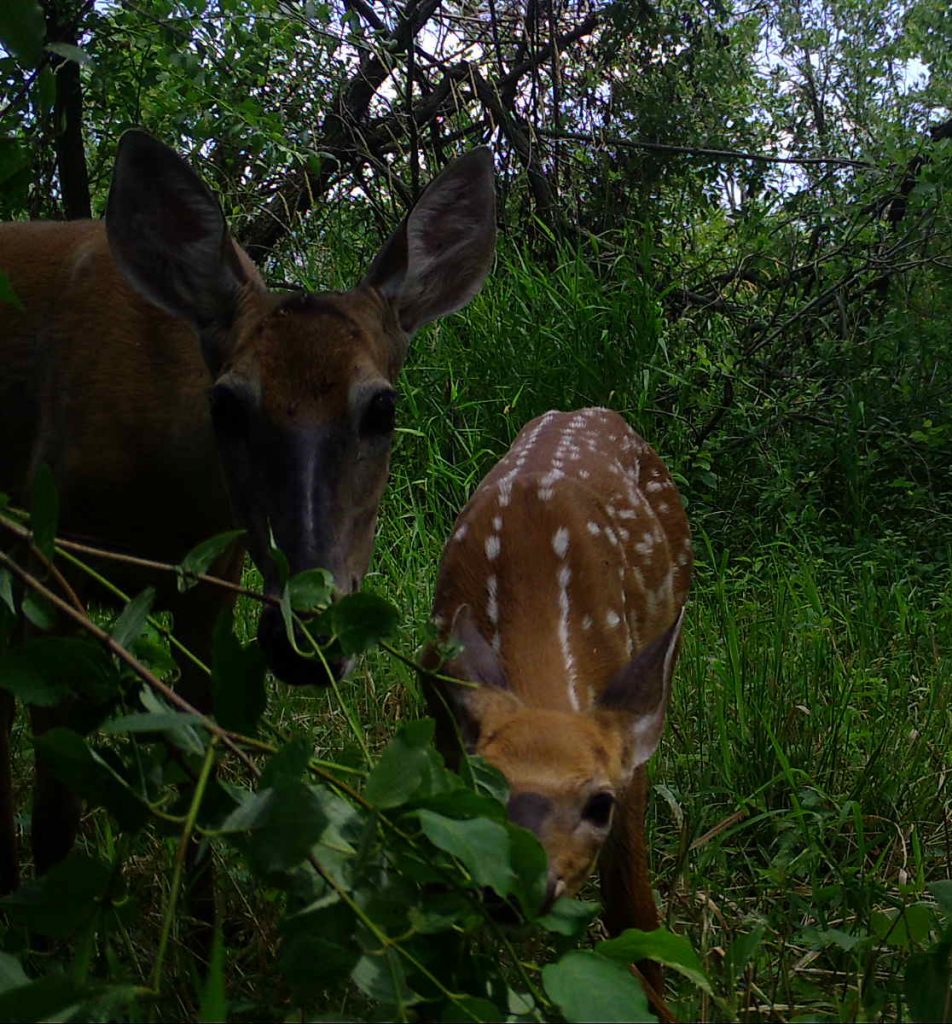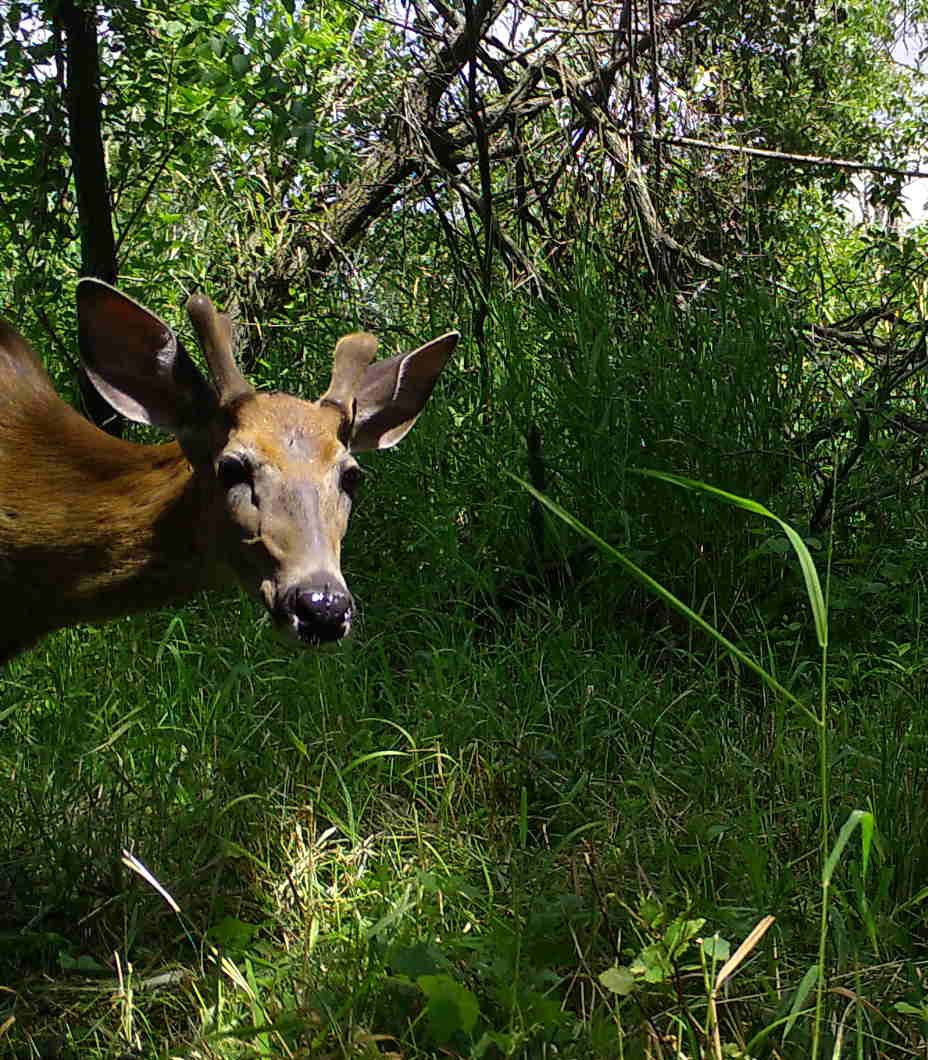Have you ever wondered what’s wandering the woods when you’re not there? Motion-triggered trail cameras are a great way to find out. Trail cameras have been popular in the whitetail hunting world for a while. However, in recent years the technology has greatly improved, and the prices have plummeted. As trail cameras become more accessible, outdoor enthusiasts of all sorts are pursuing remote photography as a form of wildlife recreation. Citizen–science wildlife monitoring projects are a great example of this technology in action.
Whether you’re new to trail cameras or an experienced user, citizen–science projects are a fun way to tie your observations into something bigger than your property boundary. In A Sand County Almanac, Leopold refers to amateur involvement in wildlife research as a ‘woodcraft of the highest cultural order.’ I couldn’t say it better in 2020. Luckily for us in Wisconsin, the DNR has one of the best projects running.
21st Century Woodcraft
The program is called Snapshot Wisconsin. It’s a statewide citizen–science project that started in 2016 and is run by the DNR, with help from several partners including UW-Madison and NASA. Volunteers in every county host trail cameras that monitor wildlife year-round. Participants just place the camera in wildlife habitat and swap the camera’s memory card and batteries at least every 90 days. Then they upload the photos to an online database and categorize them by animal species. Best part, landowners get access to all the wildlife photos from their camera.
Not confident you could identify all the wildlife that’s captured by your trail camera? Well you don’t have to, because citizen scientists from around the world help classify and verify animals through participation in Snapshot Wisconsin’s zooniverse site: snapshotwisconsin.org
In addition to the motion activated wildlife photos, the cameras are programmed to take a picture every day at the same time to create a time-lapse photo record of the habitat conditions. The data is used by the DNR to help monitor and manage wildlife habitat across Wisconsin. For examples of how the volunteer generated data contributes to the science, check out this website that outlines some fascinating results.
My Snapshot Experience
I’ve been a Snapshot volunteer for just over a year. I host a trail camera on DNR managed public land near my home. To get started, I spent a couple hours completing the online application and volunteer training. After getting permission from the local DNR wildlife biologist to put my camera on public land, the Snapshot team sent everything I needed via mail (camera, memory cards, batteries, lock, etc.).
Unfortunately, my camera was stolen the first time I put it out! I was worried that would end my participation in the project. Thankfully, the Snapshot team was very helpful and sent me a new camera in a couple days. After picking a less traveled location, my camera has been successfully deployed ever since. I’ve had a lot of fun checking the camera with my dog and eagerly anticipate the email notification that my photos are ready to review. Here are a couple of my favorites from this past year:



Catching up with the Coordinator
I got the chance to ask the Snapshot Wisconsin program coordinator, Christine Anhalt-Depies, PhD, a couple questions about the project and included her answers below:
1.What are a few things you’ve learned so far that have surprised you?
Some of my favorite finds are the instances where we’ve captured a rare species on a Snapshot camera. Last year a volunteer captured an image of a whooping crane. The picture was so clear we were able to work with experts in DNR to identify the individual based on its leg bands. This capture added one more piece of information to this rare bird’s life history—only one of 87 in the Eastern Migratory Population. This instance goes to show the power of a statewide network of trail cameras for wildlife monitoring. More here.
2. What is the most challenging part of coordinating this project?
Technology is a huge part of keeping Snapshot running. When we hear from other state agencies or groups looking to start a similar project, we typically emphasize to them how essential it is to invest in the technological infrastructure. In just the first few years of the project, we’ve amassed 42 million photos. Add to this all the associated information (i.e. where and when the photo was taken) and we’ve got ourselves one large and complex database. Our team’s capacity has significantly grown in this respect and will need to continue to do so going forward.
3. Any insights from Snapshot Wisconsin that would be of interest to private woodland owners?
Hosting a Snapshot trail camera is a great way to get to know the wildlife on your property—whether you are a new landowner or have been there awhile. We hear from volunteers all the time who are excited to see a species they didn’t expect on their camera. Our volunteers are providing essential wildlife monitoring data. Together, the over 2K cameras on the landscape are helping to provide a clear picture of wildlife in the state.
4. Any updates to the project regarding the COVID19 pandemic and impacts on volunteer participation?
Interested persons can sign up to host a trail camera today at http://snapshotwisignup.org/ but may experience some delays in receiving equipment for the duration of the health emergency. For individuals looking for a way to stay engaged while at home, they can head over to snapshotwisconsin.org to help classify trail camera photos collected from all over the state.
Photo Finish
A big thanks to Christine for sharing her perspective, and to the rest of the Snapshot Wisconsin staff as well. As a connoisseur of citizen science let me be clear, this is one of the best run projects anywhere. Contributing is fun and free, and the research has real impacts on how wildlife populations are managed in Wisconsin. I would encourage interested folks to head here to learn about everything Snapshot Wisconsin, sign up for the newsletter, and consider hosting a trail camera yourself. Snapshot Wisconsin has dedicated staff ready to get you started as a citizen scientist!

